Are you tired of being confined to a traditional office space? Yearning for the freedom to design seamlessly from anywhere in the world? Look no further.
In this article, we explore the benefits of remote work for UX designers and provide essential tools, effective communication channels, and best practices to help you overcome collaboration challenges.
Say goodbye to time zone constraints and hello to a productive, secure, and flexible work environment. It’s time to embrace the liberation of remote UX design.
Key Takeaways
- Remote work offers flexibility and independence, allowing UX designers to work from anywhere in the world.
- Collaboration challenges in remote UX design can be overcome by fostering a culture of trust, utilizing collaborative tools, and establishing clear goals and expectations.
- Effective communication channels in remote UX design include video conferencing platforms, project management tools, instant messaging apps, and regular check-ins.
- To maintain productivity and focus in a remote setting, UX designers should establish a dedicated workspace, set specific working hours, take regular breaks, and utilize remote collaboration and project management tools effectively.
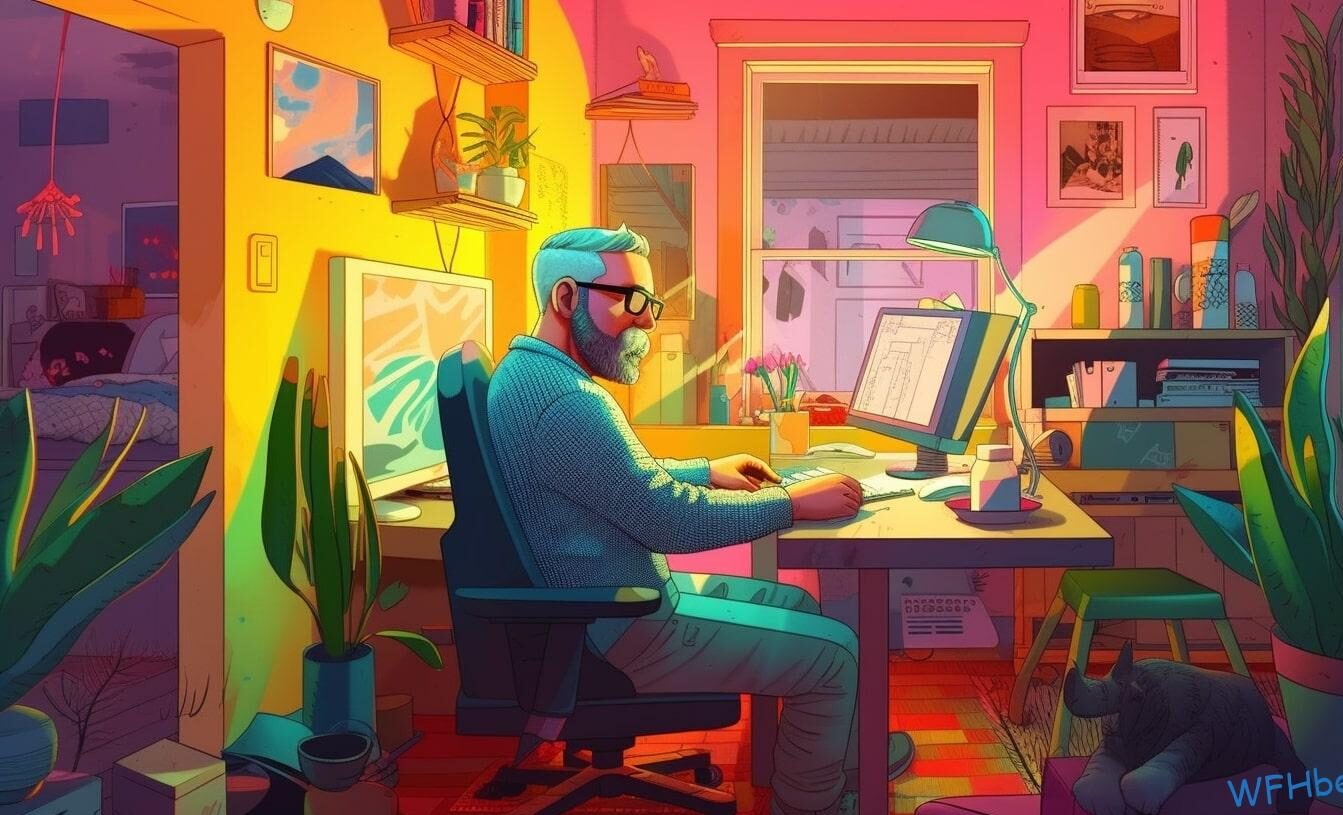
Table of Contents
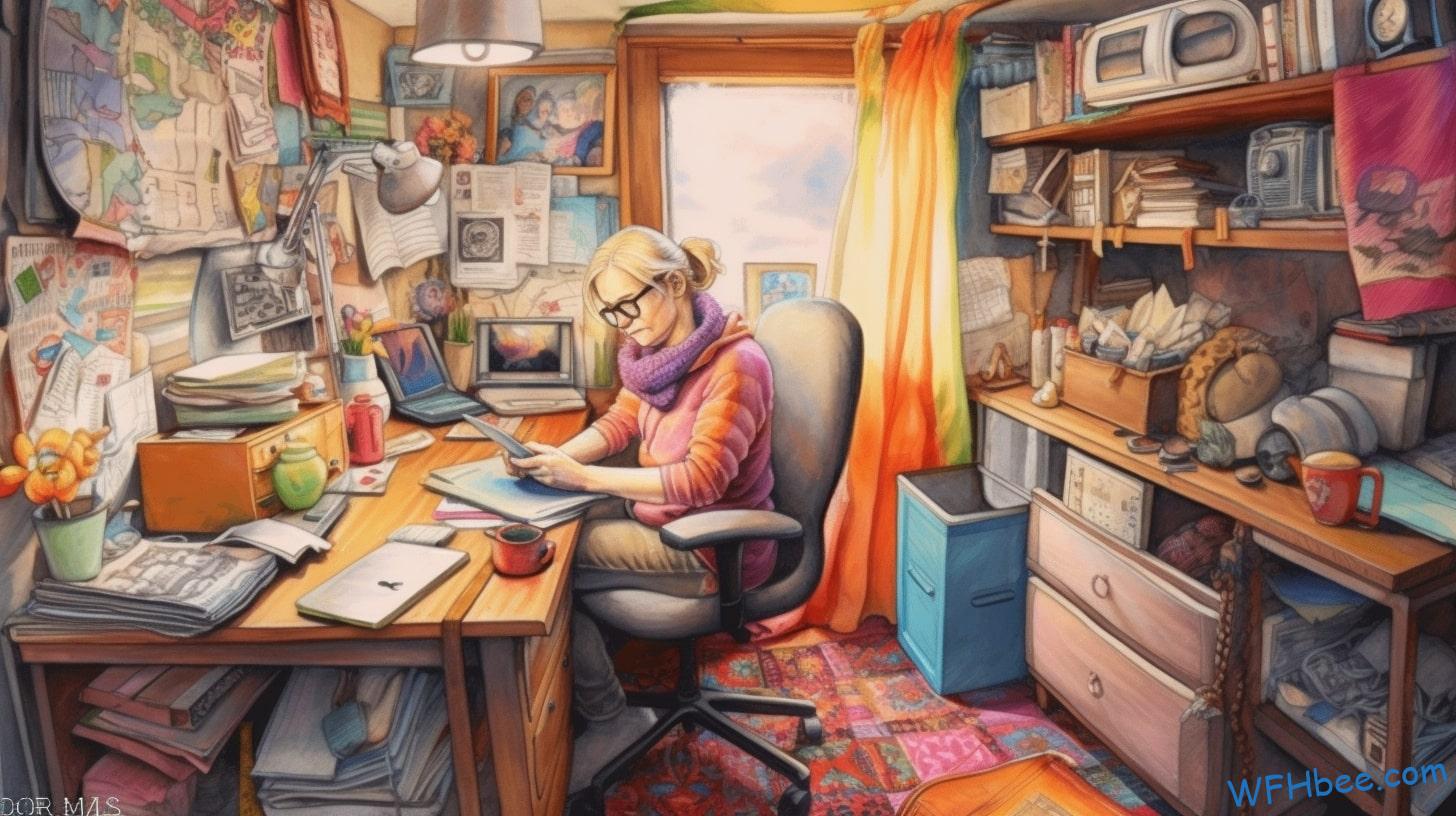
The Benefits of Remote Work for UX Designers
You’ll love the benefits of remote work for UX designers. As someone who desires freedom, remote work provides you with the flexibility and independence that traditional office jobs often lack. One major benefit is the ability to work from anywhere in the world. Whether you prefer working from your cozy home office or a trendy coffee shop downtown, the choice is yours. No longer are you confined to a physical space.
Remote work also eliminates time wasted on commuting. Instead of spending hours stuck in traffic or squeezed into a crowded subway, you can use that time to focus on what truly matters – your design projects. This newfound freedom allows you to be more productive and efficient in your work.
Another advantage of remote work for UX designers is the opportunity for better work-life balance. You have the flexibility to set your own schedule and prioritize personal commitments without sacrificing career growth. Whether it’s taking care of family obligations or pursuing hobbies and passions outside of design, remote work allows you to find harmony between your professional and personal life.
However, it’s important to acknowledge that there are challenges when it comes to remote collaboration in UX design. Communication can sometimes be tricky when not physically present with team members, leading to potential misunderstandings or delays in project progress. It requires effective communication tools and practices to overcome these obstacles successfully.
Despite these challenges, the benefits outweigh them significantly. Remote work offers freedom, flexibility, increased productivity, and better work-life balance for UX designers like yourself. Embrace this new way of working and experience firsthand how it can transform your career while providing you with the lifestyle you desire.
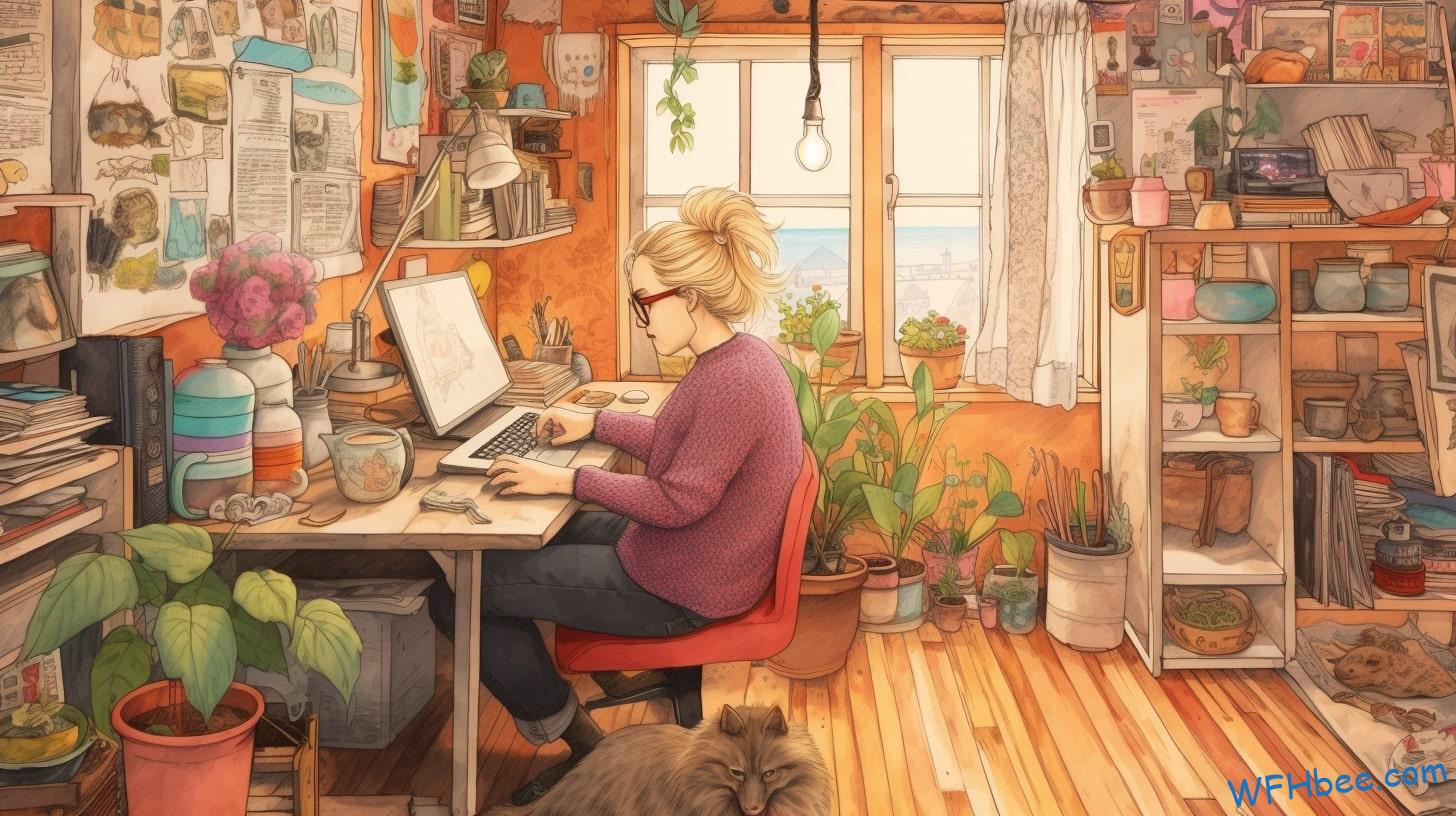
Essential Tools for Remote UX Design
Using essential tools is crucial for a smooth experience when working remotely as a UX designer. In order to design seamlessly and collaborate effectively with your team, you need to make use of remote collaboration tools. These tools will not only enhance your productivity but also give you the freedom to work from anywhere.
Here are three essential remote collaboration tools that will revolutionize your workflow and help you design seamlessly:
- Video Conferencing Software: This tool allows you to have face-to-face meetings with your team members, no matter where they are located. It provides a sense of connection and enables real-time communication, making it easier to discuss ideas and provide feedback.
- Project Management Platforms: These platforms help you stay organized by providing a centralized space where you can track tasks, deadlines, and progress. They allow for easy collaboration, ensuring everyone is on the same page and contributing to the project’s success.
- Design Collaboration Tools: With these tools, you can share designs and gather feedback from stakeholders in real-time. They enable efficient remote design critiques, allowing for seamless collaboration between designers, developers, and clients.

Establishing Effective Communication Channels
Establishing effective communication channels is crucial for successful collaboration among team members in remote work environments. When working remotely, it can be challenging to maintain clear and consistent communication, but there are solutions that can help overcome these challenges.
One of the biggest challenges of remote work is the lack of face-to-face interaction. However, technology provides various solutions to address this issue. Video conferencing platforms like Zoom or Microsoft Teams allow team members to have virtual meetings where they can see and hear each other in real-time. This helps recreate the feeling of being in the same room and facilitates more effective communication.
Another challenge is coordinating tasks and keeping everyone on the same page. To solve this problem, project management tools like Trello or Asana can be used. These platforms enable teams to create tasks, assign them to specific individuals, set deadlines, and track progress. By having a centralized place for task management, team members can easily communicate about their progress and collaborate seamlessly.
In addition to video conferencing and project management tools, instant messaging apps such as Slack or Microsoft Teams play a vital role in establishing effective communication channels. These tools allow team members to have quick conversations without needing formal meetings or emails. It fosters spontaneous discussions which are essential for brainstorming ideas or seeking immediate feedback.

Overcoming Collaboration Challenges in Remote UX Design
To overcome collaboration challenges in remote UX design, it’s important to prioritize regular check-ins with team members. This will help you stay connected and ensure that everyone is on the same page. Here are three strategies to help you overcome these challenges and collaborate effectively:
- Foster a culture of trust: Trust is essential for successful remote collaboration. Encourage open communication and create a safe space for team members to share their ideas and concerns. Trusting your team members allows for greater freedom in sharing opinions, leading to more innovative solutions.
- Utilize collaborative tools: Remote work calls for leveraging technology to bridge the gap between team members. Take advantage of collaborative tools such as project management platforms, video conferencing software, and virtual whiteboards. These tools enable real-time collaboration and make it easier to share ideas and provide feedback.
- Establish clear goals and expectations: Clearly define project goals, timelines, and individual responsibilities from the outset. Setting expectations helps keep everyone accountable and ensures that the work progresses smoothly without any confusion or delays.
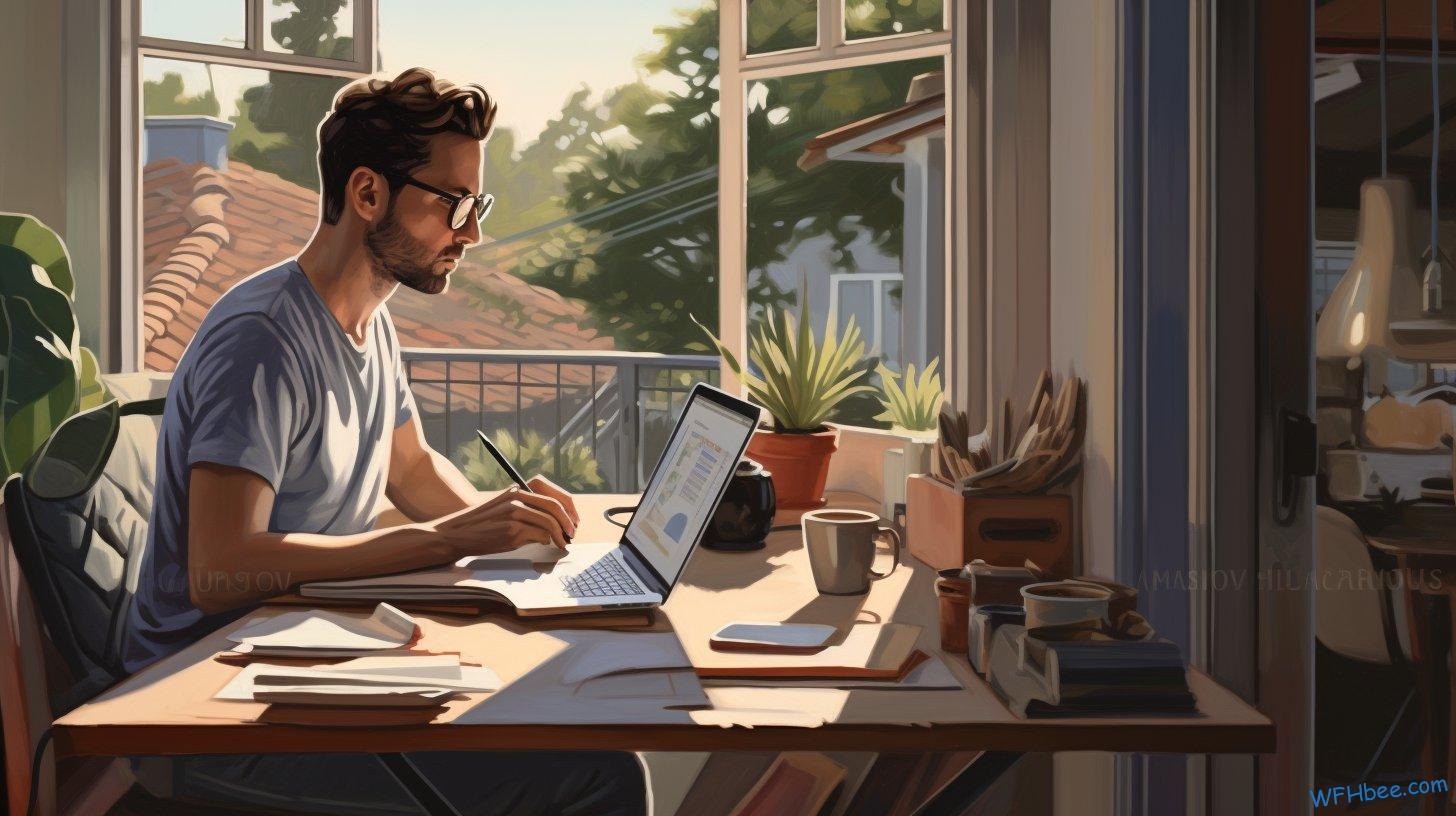
Maintaining Productivity and Focus in a Remote Setting
Maintaining productivity and focus in a remote setting can be challenging, but it’s crucial to establish a dedicated workspace that helps you stay organized and minimize distractions. When working remotely, one of the main advantages is the freedom to work from anywhere. However, this newfound freedom can also lead to difficulties in maintaining work-life balance.
To ensure maximum productivity, it’s important to create boundaries between your professional and personal life. Set specific working hours and stick to them as much as possible. This will help you maintain a routine and prevent work from encroaching on your personal time. Additionally, take regular breaks throughout the day to recharge and avoid burnout.
Another key aspect of maintaining productivity is utilizing remote collaboration tools effectively. These tools allow you to seamlessly collaborate with team members regardless of their physical location. Applications like Slack or Microsoft Teams enable real-time communication and file sharing, making it easier than ever to connect with colleagues.
Furthermore, using project management tools such as Trello or Asana can help you stay organized and keep track of tasks. These platforms allow you to assign deadlines, set priorities, and monitor progress effortlessly.

Balancing Work and Personal Life in Remote UX Design
Finding a balance between work and personal life can be challenging for remote UX designers, but it’s crucial to prioritize self-care and establish clear boundaries.
As a remote UX designer, you have the freedom to work from anywhere, but this freedom comes with its own set of challenges. Here are three key challenges you may face when trying to maintain a healthy work-life balance:
- Blurred boundaries: Working remotely can blur the lines between your professional and personal life. It’s important to set clear boundaries by defining specific working hours and creating a designated workspace. This will help you separate your work life from your personal life and prevent burnout.
- Lack of social interaction: Remote work can sometimes feel isolating, as you miss out on the daily interactions with colleagues that you would have in an office setting. To combat this, make an effort to connect with other UX designers through online communities or attend virtual industry events. Building relationships with like-minded professionals will not only provide support but also foster creativity and collaboration.
- Difficulty disconnecting: When your work is always accessible on your laptop or smartphone, it can be hard to switch off at the end of the day. Establishing a routine that includes regular breaks and dedicated time for relaxation is essential for maintaining a healthy work-life balance. Make sure to prioritize self-care activities such as exercise, hobbies, or spending quality time with loved ones.
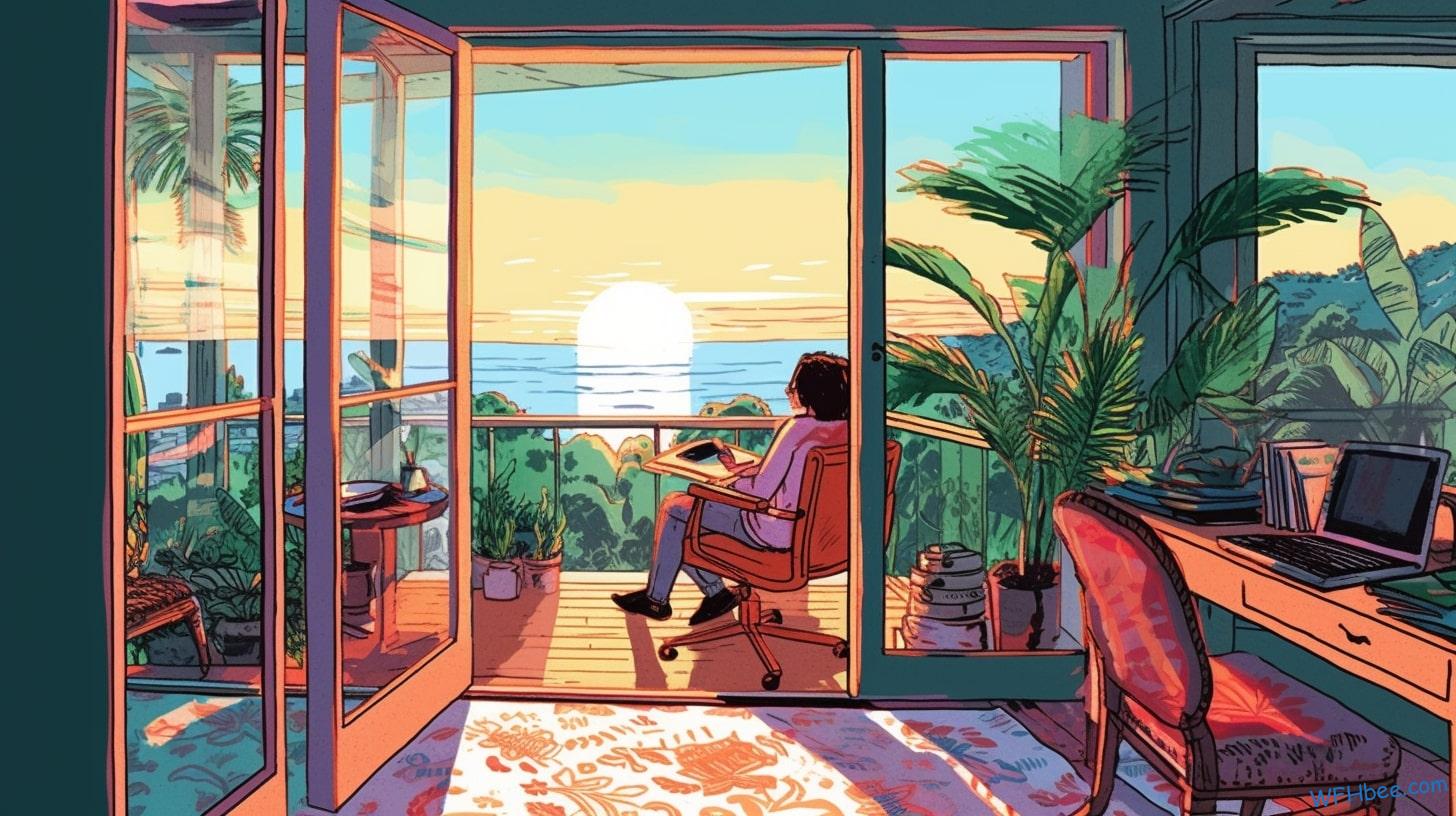
Strategies for Remote User Research and Testing
Implementing effective strategies for remote user research and testing can help enhance the quality and validity of your UX design decisions.
When it comes to remote work, recruiting users for research may seem challenging, but fear not! There are several strategies you can use to ensure you have a diverse pool of participants.
Firstly, leverage online platforms and communities relevant to your target audience. Engage with these communities by sharing your research goals and inviting participants to take part in your studies. This approach allows you to tap into a wide range of potential users who are already interested in your product or service.
Another strategy is partnering with professional recruitment agencies specialized in remote user recruitment. These agencies have access to large databases of potential participants from various backgrounds. They can help you find the right individuals who closely match your target audience.
Now that you have recruited your remote participants, it’s time to collect their feedback effectively. One way is by using remote usability testing tools that allow you to observe users’ interactions with your product remotely in real-time. These tools often come with features like screen recording and live chat, enabling you to gather valuable insights while maintaining a seamless user experience.
Additionally, conducting remote interviews or surveys can provide further qualitative or quantitative feedback from your users. Platforms like video conferencing software or online survey tools make it easy for both parties to communicate efficiently without any geographical constraints.
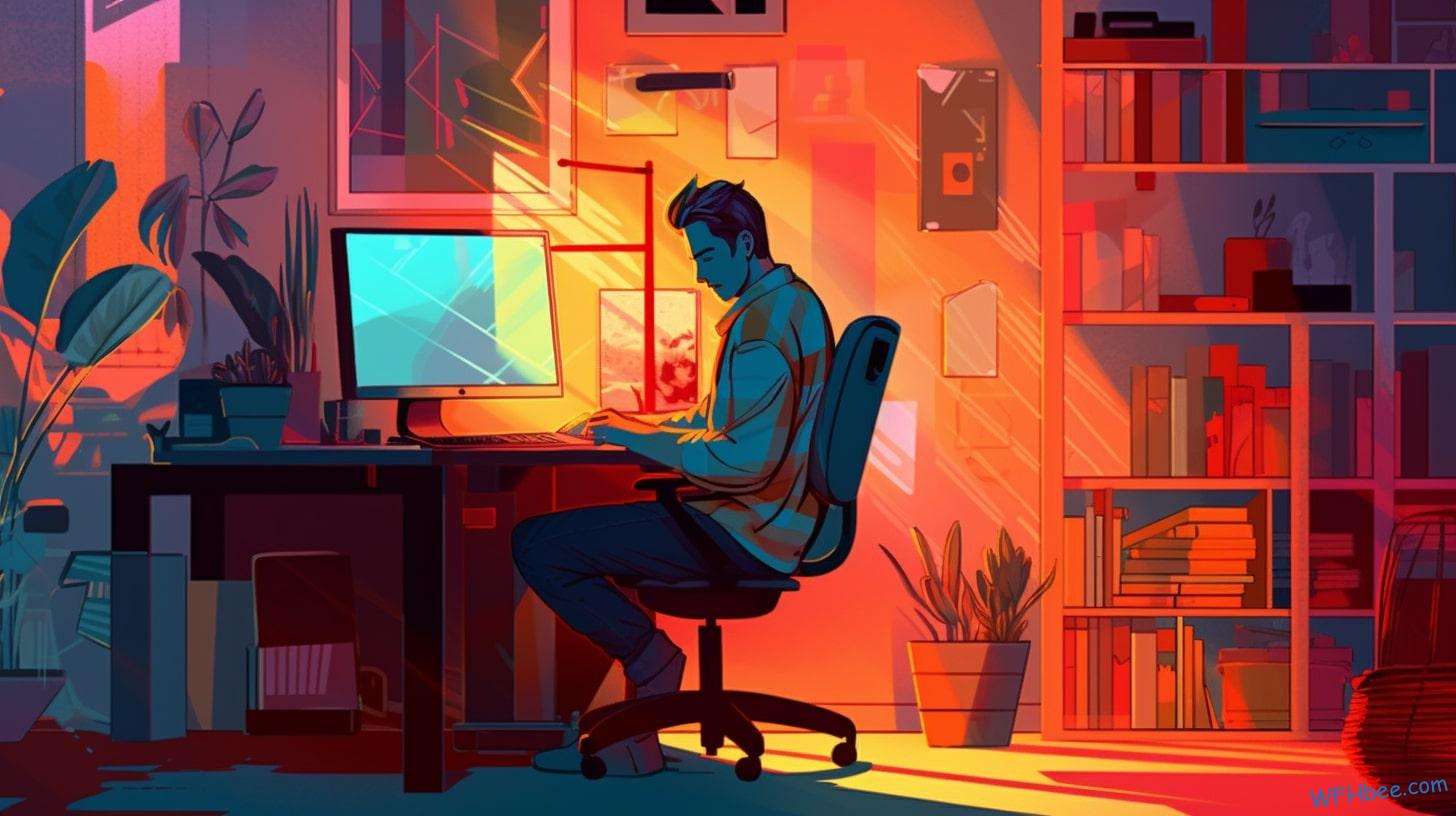
Creating a Seamless Remote Design Workflow
Collaborating effectively with team members is crucial for a smooth workflow when working remotely. In the world of design, where collaboration and feedback are essential, remote design collaboration can present unique challenges. However, with the right tools and mindset, you can create a seamless remote design workflow that fosters creativity and productivity.
Here are three key strategies to help you navigate the waters of remote design collaboration:
- Embrace digital tools: Utilize collaborative platforms such as Figma or InVision to share designs in real-time, allowing team members to provide immediate feedback. These tools offer features like commenting and version control, ensuring everyone is on the same page.
- Establish clear communication channels: Communication is paramount when working remotely. Utilize video conferencing software like Zoom or Slack for face-to-face discussions and quick updates. Create dedicated channels for specific projects or topics to keep conversations organized and easily accessible.
- Encourage active participation: Remote work requires a sense of freedom and autonomy, so encourage your team members to actively participate in discussions and contribute their ideas. Foster an environment where everyone feels comfortable sharing their thoughts openly.
By implementing these strategies, you can overcome the challenges of remote design collaboration and create a seamless workflow that allows for efficient feedback loops. Remember that effective teamwork relies on clear communication, active participation, and embracing digital tools – all elements that empower individuals who desire freedom in their work environment.

Cultivating a Remote Design Team Culture
Creating a strong team culture is essential for fostering collaboration and creativity among remote designers. When it comes to remote team building, there are several strategies you can implement to cultivate a positive and collaborative environment.
Firstly, encourage open communication among team members. Utilize instant messaging platforms or video conferencing tools to facilitate regular check-ins and discussions. By maintaining constant communication, everyone on the team will feel connected and engaged, making collaboration easier and more effective.
Another way to foster collaboration is by promoting trust within the team. Trust is crucial in remote work settings as you might not have face-to-face interactions with your colleagues. Encourage transparency and accountability amongst team members, allowing them to take ownership of their work while trusting others to do the same.
In addition, consider organizing virtual team-building activities that promote camaraderie among your remote design team. These activities could include online games or virtual brainstorming sessions where everyone can contribute their ideas freely.
Creating a safe space for sharing feedback is also important for fostering collaboration. Encourage constructive criticism and provide opportunities for designers to learn from each other’s experiences. This will not only help improve individual skills but also enhance the overall quality of the design work produced by the team.
Lastly, celebrate achievements together as a remote design team. Recognize milestones reached, successful projects completed, or even personal accomplishments of individual team members. By celebrating together, you create a sense of unity and motivation within the team.
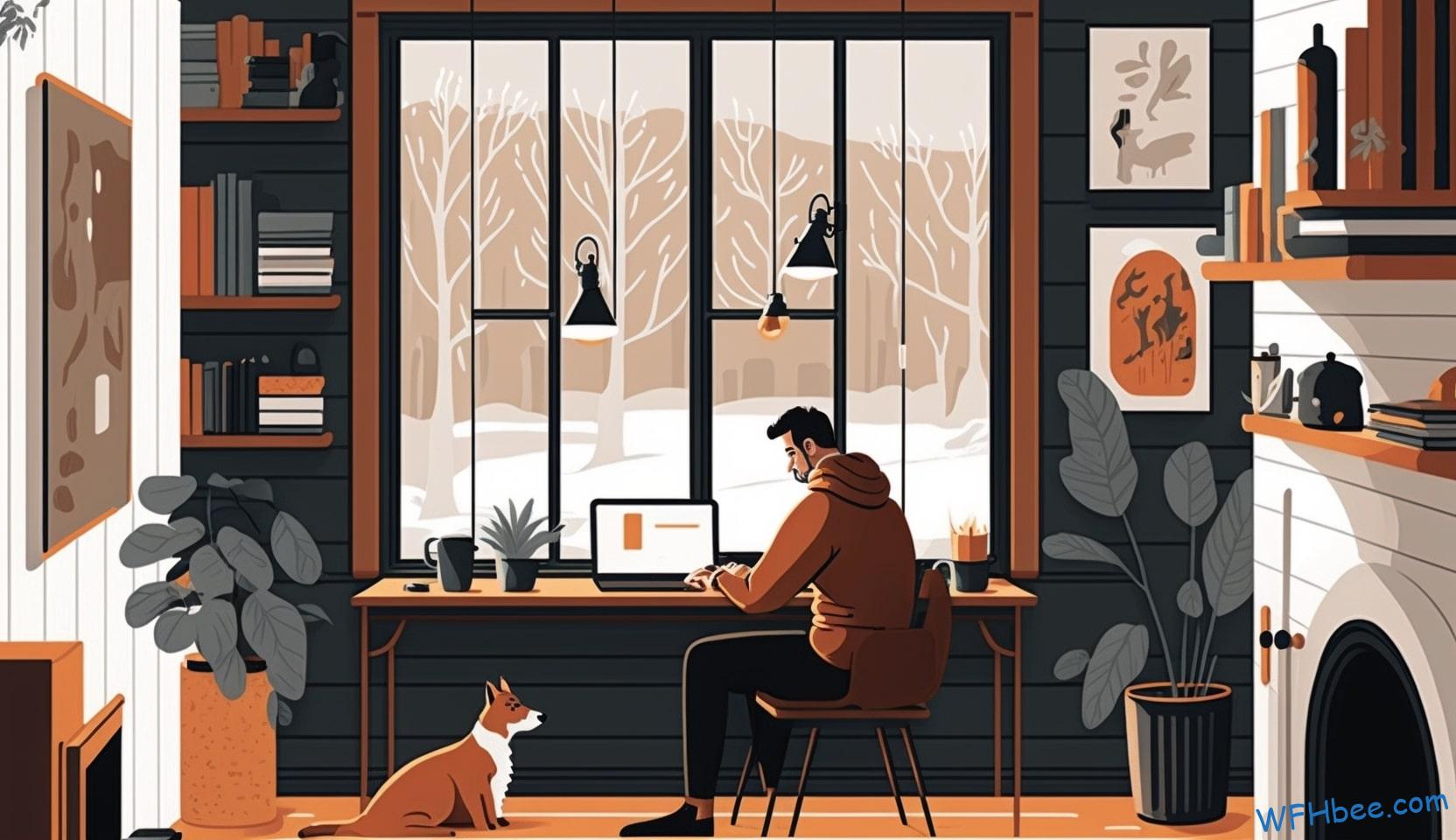
Addressing Security and Privacy Concerns in Remote UX Design
To address security and privacy concerns in your remote UX design work, it’s important to prioritize data encryption and secure communication channels. As a designer who values freedom and privacy, you want to ensure that your work is protected from unauthorized access.
Here are three essential steps you can take to enhance the security protocols and privacy measures of your remote UX design process:
- Implement end-to-end encryption: Encrypting your data from end-to-end ensures that only authorized parties can access it. By using encryption algorithms such as AES-256, you can safeguard sensitive information like user data, prototypes, and design assets.
- Use secure communication platforms: Opt for communication tools that prioritize security and privacy. Look for platforms that offer features like encrypted messaging, password protection for meetings, and two-factor authentication for added layers of security.
- Regularly update software and devices: Keep all your software up to date with the latest security patches to protect against potential vulnerabilities. Additionally, ensure that all devices used for remote UX design work have strong passwords or biometric authentication enabled.
By following these steps, you can create a safe environment for yourself and your clients while working remotely. Prioritizing data encryption helps maintain the confidentiality of sensitive information throughout the design process. Using secure communication channels ensures that your conversations remain private and inaccessible to unauthorized individuals.
Remember that protecting your work goes hand in hand with preserving your freedom as a designer. By implementing robust security protocols and privacy measures in your remote UX design workflow, you can confidently focus on creating exceptional experiences without compromising on data protection or personal liberties.

Managing Time Zones and Remote Collaboration
When managing time zones in remote collaboration, it’s crucial to find a scheduling system that accommodates everyone’s availability. As someone who values freedom and flexibility in your work, you understand the importance of effective time management when working with remote teams.
In order to effectively manage time zones, it’s essential to establish clear communication channels and set realistic expectations from the start. Start by identifying the most convenient overlap in working hours for all team members. This will ensure that you have dedicated time for collaboration and can address any urgent matters promptly.
Utilizing technology tools such as online calendars or project management software can greatly simplify scheduling across different time zones. These tools allow you to easily coordinate meetings, assign tasks, and track progress, ensuring that everyone stays on the same page regardless of their location.
Another strategy is to adopt a flexible work schedule that allows team members to choose their preferred working hours within certain boundaries. This approach empowers individuals to work at times when they are most productive while still accommodating collaborative efforts.
Additionally, embracing asynchronous communication methods can help overcome time zone challenges. Encouraging team members to utilize messaging apps or project management platforms that allow for non-real-time communication ensures that important information is shared efficiently without causing unnecessary delays.

Remote UX Design Best Practices and Tips
By embracing asynchronous communication methods, you can effectively collaborate on UX design projects regardless of your location or time zone. Remote design collaboration has become a popular trend among freedom-seeking individuals like yourself who value the flexibility and independence that comes with working remotely.
Here are three best practices and tips to help you make the most out of remote UX design collaboration:
- Leverage collaborative tools: Embrace technology and use collaboration platforms like Figma or InVision to share designs, gather feedback, and iterate on your work in real-time. These tools allow you to collaborate seamlessly with team members from anywhere in the world, empowering you to work at your own pace.
- Establish clear communication channels: Communication is key when working remotely. Set up regular video calls or virtual meetings to discuss project progress, clarify requirements, and address any challenges that may arise during the design process. By maintaining open lines of communication, you ensure everyone is on the same page even if they’re miles away.
- Create a remote design presentation: When presenting your designs remotely, it’s crucial to create engaging presentations that captivate your audience’s attention. Utilize visual storytelling techniques by incorporating animations or interactive prototypes into your presentations. This not only helps convey your ideas effectively but also adds an element of excitement and creativity to your remote design presentations.
With these best practices and tips in mind, embrace the freedom that comes with remote UX design collaboration. Break free from traditional office constraints and enjoy the ability to work whenever and wherever it suits you best.

Adapting to Remote Work: Lessons From Experienced UX Designers
Experienced UX designers have learned valuable lessons on how to successfully adapt to remote work. As someone who desires freedom in their work, it’s important to stay motivated and maintain a healthy work-life balance when working remotely.
One tip for staying motivated is to create a dedicated workspace that inspires productivity. Set up a comfortable and organized area where you can focus on your tasks without distractions. Personalize it with items that make you happy and help you stay motivated throughout the day.
Another way to stay motivated is by setting clear goals and deadlines for yourself. Break down your projects into smaller tasks and establish achievable milestones. This will give you a sense of accomplishment as you complete each task, keeping your motivation high.
Maintaining work-life balance is crucial when working remotely. It can be tempting to blur the lines between work and personal life when your office is just steps away from your living room. Establishing boundaries is key here. Set specific working hours, take regular breaks, and avoid overworking yourself.
Additionally, make time for activities outside of work that bring you joy and help you relax. Engage in hobbies or exercise regularly to recharge your mind and body.

Frequently Asked Questions
How Can Remote UX Designers Maintain Productivity and Focus in a Remote Setting?
To maintain productivity and focus while working remotely, you need efficient remote collaboration tools and effective time management techniques. Stay organized, set clear goals, and prioritize tasks to design seamlessly from anywhere.
What Are Some Strategies for Conducting User Research and Testing Remotely?
To conduct remote user research and testing, use video conferencing tools for interviews, screen sharing for design reviews, and remote usability testing platforms. These strategies allow you to gather valuable insights while working from anywhere.
How Can Remote UX Designers Effectively Establish Communication Channels With Their Team?
To effectively establish communication channels with your team, start by exploring remote collaboration tools. Coincidentally, building rapport remotely is key to fostering a productive and cohesive work environment. Enjoy the freedom of seamless design!
What Are Some Best Practices for Creating a Seamless Remote Design Workflow?
To create a seamless remote design workflow, utilize creating collaborative tools and embrace remote design collaboration. This empowers you to work freely while effectively communicating and collaborating with your team from anywhere.
How Can Remote UX Designers Balance Their Work and Personal Life Effectively?
To balance work and personal life effectively as a remote UX designer, prioritize time management. Set clear boundaries between work and leisure. Use productivity tools to stay organized and focused, allowing for freedom while maintaining a healthy work-life balance.
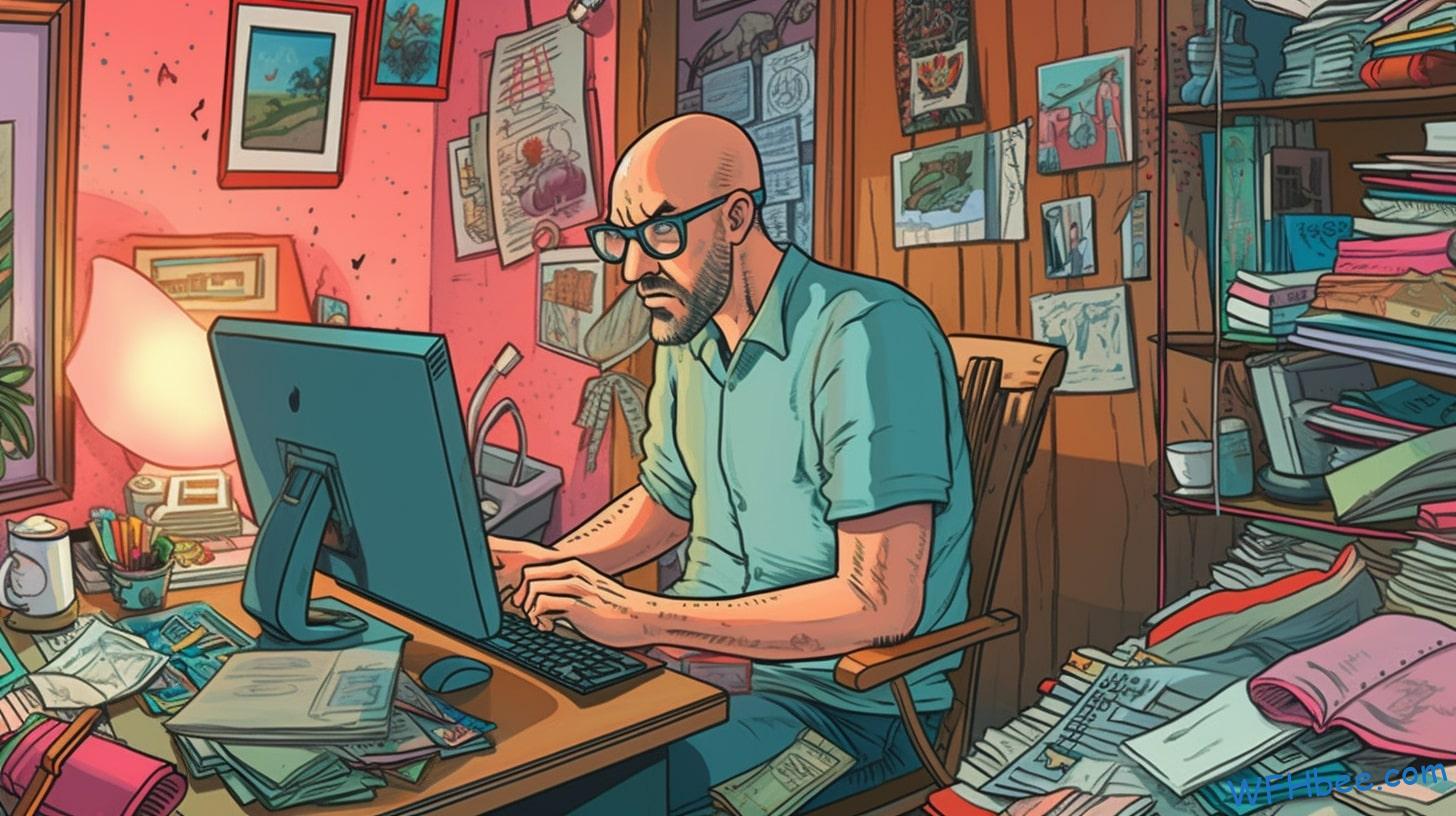
Conclusion
Congratulations on completing this article about remote work for UX designers!
By exploring the benefits, essential tools, communication channels, collaboration challenges, productivity tips, security concerns, and best practices of remote UX design, you have gained valuable insights into designing seamlessly from a distance.
Just like a conductor leading an orchestra with grace and precision, embrace the virtual stage and let your creativity flow.
So go forth and design harmoniously in this new era of remote work!







